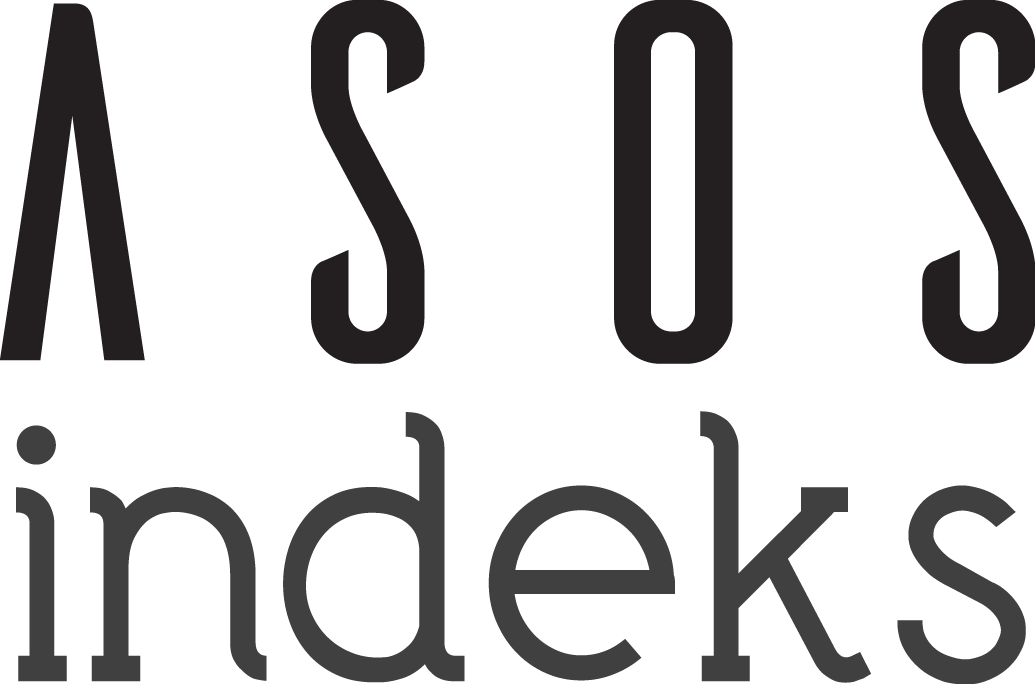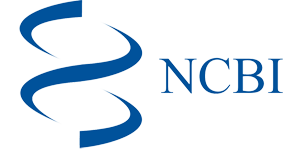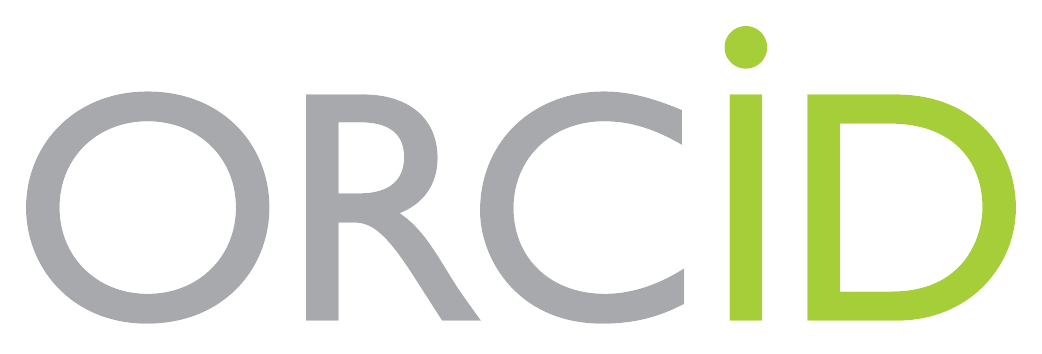Abstract
References
- Rolfs A, Fazekas F, Grittner U, et al. Acute cerebrovascular disease in the young: the stroke in young fabry patients study. Stroke. 2013;44(2):340-349. doi:10.1161/STROKEAHA.112.663708
- Cui Q. Modifiable and non-modifiable risk factors in ischemic stroke: a meta-analysis. Afr Health Sci. 2019;19(2):2121-2129. doi:10.4314/ahs.v19i2.36
- Zhou Y, Zhang S, Fan X. Role of polyphenols as antioxidant supplementation in ischemic stroke. Oxid Med Cell Longev. 2021;25(6):1. doi:10.1155/2021/5471347
- Abraira L, Giannini N, Santamarina E, et al. Correlation of blood biomarkers with early-onset seizures after an acute stroke event. Epilepsy Behav. 2020;104(Pt B):106549. doi:10.1016/j.yebeh.2019.106549
- Kostulas N, Pelidou S. H, Kivisäkk P, Kostulas V, Link H. Increased IL-1β, IL-8, and IL-17 mRNA expression in blood mononuclear cells observed in a prospective ischemic stroke study. Stroke. 1999;30(10):2174-2179. doi:10.1161/01.str.30.10.2174
- Zeng R, Xu CH, Xu YN, Wang YL, Wang M. Association of leptin levels with pathogenetic risk of coronary heart disease and stroke: a meta-analysis. Arq Bras Endocrinol Metabol. 2014;58(8):817-823. doi:10.1590/ 0004-2730000003390
- Efstathiou SP, Tsioulos DI, Tsiakou AG, Gratsias YE, Pefanis AV, Mountokalakis TD. Plasma adiponectin levels and five-year survival after first-ever ischemic stroke. Stroke. 2005;36(9):1915-1919. doi:10. 1161/01.STR.0000177874.29849.f0
- Liu H, Wu X, Luo J, et al. Adiponectin peptide alleviates oxidative stress and NLRP3 inflammasome activation after cerebral ischemia-reperfusion injury by regulating AMPK/GSK-3β. Exp Neurol. 2020;329: 113302. doi:10.1016/j.expneurol.2020.113302
- Prugger C, Luc G, Haas B, et al. Multiple biomarkers for the prediction of ischemic stroke: the PRIME study. Arterioscler Thromb Vasc Biol. 2013;33(3):659-666. doi:10.1161/ATVBAHA.112.300109
- Welsh P, Lowe GD, Chalmers J, et al. Associations of proinflammatory cytokines with the risk of recurrent stroke. Stroke. 2008;39(8):2226-2230. doi:10.1161/STROKEAHA.107.504498
- Bitencourt ACS, Timóteo RP, Bazan R, et al. Association of proinflammatory cytokine levels with stroke severity, infarct size, and muscle strength in the acute phase of stroke. J Stroke Cerebrovasc Dis. 2022;31(1):106187. doi:10.1016/j.jstrokecerebrovasdis.2021.106187
- Rajkovic I, Denes A, Allan SM, Pinteaux E. Emerging roles of the acute phase protein pentraxin-3 during central nervous system disorders. J Neuroimmunol. 2016;292:27-33. doi:10.1016/j.jneuroim.2015.12.007
- Kunes P, Holubcova Z, Kolackova M, Krejsek J. Pentraxin-3 (PTX 3): an endogenous modulator of the inflammatory response. Mediators Inflamm. 2012;2012 (1):920517. doi:10.1155/2012/920517
- Qin LZ, Li W, Huang Y, et al. PTX3 expression in the plasma of elderly ACI patients and its relationship with severity and prognosis of the disease. Eur Rev Med Pharmacol Sci. 2016;20(19):4112-4118.
- Lo EH. Degeneration and repair in central nervous system disease. Nat Med. 2010;16(11):1205-1209. doi:10.1038/nm.2226
- Arai K, Jin G, Navaratna D, Lo EH. Brain angiogenesis in developmental and pathological processes: neurovascular injury and angiogenic recovery after stroke. FEBS J. 2009;276(17):4644-4652. doi:10.1111/j. 1742-4658.2009.07176.x
- Argaw AT, Asp L, Zhang J, et al. Astrocyte-derived VEGF-A drives blood-brain barrier disruption in CNS inflammatory disease. J Clin Invest. 2012;122(7):2454-2468. doi:10.1172/JCI60842
- Rosell A, Lo EH. Multiphasic roles for matrix metalloproteinases after stroke. Curr Opin Pharmacol. 2008;8(1):82-89. doi:10.1016/j.coph.2007. 12.001
- Greenberg DA. Neurogenesis and stroke. CNS Neurol Disord Drug Targets. 2007;6(5):321-325. doi:10.2174/187152707783220901
- Shindo A, Takase H, Hamanaka G, et al. Biphasic roles of pentraxin 3 in cerebrovascular function after white matter stroke. CNS Neurosci Ther. 2021;27(1):60-70. doi:10.1111/cns.13510
- Shindo A, Maki T, Mandeville ET, et al. Astrocyte-derived pentraxin 3 supports blood–brain barrier integrity under acute phase of stroke. Stroke. 2016;47(4):1094-1100. doi:10.1161/STROKEAHA.115.012133
- Zhang ZG, Chopp M. Promoting brain remodeling to aid in stroke recovery. Trends Mol Med. 2015;21(9):543-548. doi:10.1016/j.molmed. 2015.07.005
- Rodriguez-Grande B, Varghese L, Molina-Holgado F, et al. Pentraxin 3 mediates neurogenesis and angiogenesis after cerebral ischaemia. J Neuroinflammation. 2015;12(1-11):15. doi:10.1186/s12974-014-0227-y
- Khrunin AV, Khvorykh GV, Rozhkova AV, et al. Examination of genetic variants revealed from a rat model of brain ischemia in patients with ischemic stroke: a pilot study. 2021;12(12):1938. Genes (Basel). 2021; 12(12):1938. doi:10.3390/genes12121938
- Latini R, Maggioni AP, Peri G, et al. Prognostic significance of the long pentraxin PTX3 in acute myocardial infarction. Circulation. 2004; 110(16):2349-2354. doi:10.1161/01.CIR.0000145167.30987.2E
- Ahrițculesei RV, Boldeanu L, Caragea DC, et al. Association between pentraxins and obesity in prediabetes and newly diagnosed type 2 diabetes mellitus patients. Int J Mol Sci. 2025;26(8):3661. doi:10.3390/ijms26083661
- Soeki T, Bando S, Uematsu E, et al. Pentraxin 3 is a local inflammatory marker in atrial fibrillation. Heart Vessels. 2014;29(5):653-658. doi:10. 1007/s00380-013-0400-8
- Chen W, Zhuang YS, Yang CX, et al. The protective role of the long pentraxin PTX3 in spontaneously hypertensive rats with heart failure. Cardiovasc Toxicol. 2021;21(10):808-819. doi:10.1007/s12012-021-09671-0
- Harun H, Dewi AF, Amelia R. The correlation between pentraxin-3, matrix metalloproteinase-9, and estimated glomerular filtration rate in patients with chronic kidney disease. JKKI. 2024;15(1):60-69.
- Matsubara J, Sugiyama S, Nozaki T, et al. Incremental prognostic significance of the elevated levels of pentraxin 3 in patients with heart failure with normal left ventricular ejection fraction. J Am Heart Assoc. 2014;3(4):e000928. doi:10.1161/JAHA.114.000928
- Yi L, Tang J, Shi C, et al. Pentraxin 3, TNF-α, and LDL-C are associated with carotid artery stenosis in patients with ischemic stroke. Front Neurol. 2020;10(3):1365. doi:10.3389/fneur.2019.01365
- Lee R, Ahn HR, Shin MH, et al. Association of plasma pentraxin-3 level with lipid levels and cardiovascular risk factors in people with no history of lipid-lowering medication: the Dong-gu study. J Atheroscler Thromb. 2019;26(8):738-745. doi:10.5551/jat.47167
- Rajkovic I, Wong R, Lemarchand E, et al. Pentraxin 3 promotes long-term cerebral blood flow recovery, angiogenesis, and neuronal survival after stroke. J Mol Med (Berl). 2018;96(12):1319-1332. doi:10.1007/s 00109-018-1698-6
- Ryu WS, Kim CK, Kim BJ, Kim C, Lee SH, Yoon BW. Pentraxin 3: a novel and independent prognostic marker in ischemic stroke. Atherosclerosis. 2012;220(2):581-586. doi:10.1016/j.atherosclerosis.2011.11.036
- Sezer S, Uçar F, UlusoyEK, et al. Serum amyloid A, fetuin-A, and pentraxin-3 levels in patients with ischemic stroke: novel prognostic biomarkers? Turk J Med Sci. 2014;44(1):16-23. doi:10.3906/sag-1211-90
- Zhang CY, Han HD, Wang SY, Huang SR, Deng BQ. Pentraxin-3 in thrombolytic therapy for acute ischemic stroke: no relation with curative effect and prognosis. Med Sci Monit. 2018;24:4427-4432. doi:10.12659/MSM.909015
- Zhang Y, Hu H, Liu C, Wu J, Zhou S, Zhao T. Serum pentraxin 3 as a biomarker for prognosis of acute minor stroke due to large artery atherosclerosis. Brain Behav. 2021;11(1):7 doi:10.1002/brb3.1956
- Ceylan M, Yalcin A, Bayraktutan OF, Atis O, Acar E. Serum pentraxin-3 levels in acute stroke: No association with stroke prognosis. Atherosclerosis. 2015;243(2):616-620. doi:10.1016/j.atherosclerosis.2015. 10.089
Abstract
Aims: Pentraxin 3 (PTX3), an indicator of the inflammatory process, is an acute-phase protein (AP) with biphasic effect. In the present study, the relationship between PTX3 levels and stroke risk factors in stroke patients were analyzed.
Methods: Acute stroke patients (n=56) were diagnosed using imaging techniques and clinical examination along with and their laboratory results. The control group consisted of thirty healthy individuals. Blood samples of the patient group were obtained within the first 24 hours of stroke onset. Serum pentraxin levels of both groups were analyzed and their relationship with stroke risk factors evaluated.
Results: A total of 86 people, 56 stroke patients and 30 healthy controls were included in the present study. Out of the participants, in both groups, 50% were female (p=1.000). No significant difference was determined between the groups in terms of age (p=0.226). The pentraxin value in the patient group was significantly lower than that in the control group (p=0.003). No significant difference between gender and presence of comorbidities in terms of PTX3 value (p>0.05) were present. Likewise, no significant correlation could be established between PTX3 value and National Institutes of Health Stroke Scale (NIHSS) and age in the patient group.
Conclusion: Serum PTX3 can be used as a biomarker in acute stroke patients. However, it cannot be used as a predicator in determining prognosis during the acute period.
Keywords
Ethical Statement
Ethics Committee of Erzincan Binali Yıldırım University Mengücek Gazi Training and Research Hospital (Approval Nr. 2023-05/2).
Supporting Institution
NO FOUND
References
- Rolfs A, Fazekas F, Grittner U, et al. Acute cerebrovascular disease in the young: the stroke in young fabry patients study. Stroke. 2013;44(2):340-349. doi:10.1161/STROKEAHA.112.663708
- Cui Q. Modifiable and non-modifiable risk factors in ischemic stroke: a meta-analysis. Afr Health Sci. 2019;19(2):2121-2129. doi:10.4314/ahs.v19i2.36
- Zhou Y, Zhang S, Fan X. Role of polyphenols as antioxidant supplementation in ischemic stroke. Oxid Med Cell Longev. 2021;25(6):1. doi:10.1155/2021/5471347
- Abraira L, Giannini N, Santamarina E, et al. Correlation of blood biomarkers with early-onset seizures after an acute stroke event. Epilepsy Behav. 2020;104(Pt B):106549. doi:10.1016/j.yebeh.2019.106549
- Kostulas N, Pelidou S. H, Kivisäkk P, Kostulas V, Link H. Increased IL-1β, IL-8, and IL-17 mRNA expression in blood mononuclear cells observed in a prospective ischemic stroke study. Stroke. 1999;30(10):2174-2179. doi:10.1161/01.str.30.10.2174
- Zeng R, Xu CH, Xu YN, Wang YL, Wang M. Association of leptin levels with pathogenetic risk of coronary heart disease and stroke: a meta-analysis. Arq Bras Endocrinol Metabol. 2014;58(8):817-823. doi:10.1590/ 0004-2730000003390
- Efstathiou SP, Tsioulos DI, Tsiakou AG, Gratsias YE, Pefanis AV, Mountokalakis TD. Plasma adiponectin levels and five-year survival after first-ever ischemic stroke. Stroke. 2005;36(9):1915-1919. doi:10. 1161/01.STR.0000177874.29849.f0
- Liu H, Wu X, Luo J, et al. Adiponectin peptide alleviates oxidative stress and NLRP3 inflammasome activation after cerebral ischemia-reperfusion injury by regulating AMPK/GSK-3β. Exp Neurol. 2020;329: 113302. doi:10.1016/j.expneurol.2020.113302
- Prugger C, Luc G, Haas B, et al. Multiple biomarkers for the prediction of ischemic stroke: the PRIME study. Arterioscler Thromb Vasc Biol. 2013;33(3):659-666. doi:10.1161/ATVBAHA.112.300109
- Welsh P, Lowe GD, Chalmers J, et al. Associations of proinflammatory cytokines with the risk of recurrent stroke. Stroke. 2008;39(8):2226-2230. doi:10.1161/STROKEAHA.107.504498
- Bitencourt ACS, Timóteo RP, Bazan R, et al. Association of proinflammatory cytokine levels with stroke severity, infarct size, and muscle strength in the acute phase of stroke. J Stroke Cerebrovasc Dis. 2022;31(1):106187. doi:10.1016/j.jstrokecerebrovasdis.2021.106187
- Rajkovic I, Denes A, Allan SM, Pinteaux E. Emerging roles of the acute phase protein pentraxin-3 during central nervous system disorders. J Neuroimmunol. 2016;292:27-33. doi:10.1016/j.jneuroim.2015.12.007
- Kunes P, Holubcova Z, Kolackova M, Krejsek J. Pentraxin-3 (PTX 3): an endogenous modulator of the inflammatory response. Mediators Inflamm. 2012;2012 (1):920517. doi:10.1155/2012/920517
- Qin LZ, Li W, Huang Y, et al. PTX3 expression in the plasma of elderly ACI patients and its relationship with severity and prognosis of the disease. Eur Rev Med Pharmacol Sci. 2016;20(19):4112-4118.
- Lo EH. Degeneration and repair in central nervous system disease. Nat Med. 2010;16(11):1205-1209. doi:10.1038/nm.2226
- Arai K, Jin G, Navaratna D, Lo EH. Brain angiogenesis in developmental and pathological processes: neurovascular injury and angiogenic recovery after stroke. FEBS J. 2009;276(17):4644-4652. doi:10.1111/j. 1742-4658.2009.07176.x
- Argaw AT, Asp L, Zhang J, et al. Astrocyte-derived VEGF-A drives blood-brain barrier disruption in CNS inflammatory disease. J Clin Invest. 2012;122(7):2454-2468. doi:10.1172/JCI60842
- Rosell A, Lo EH. Multiphasic roles for matrix metalloproteinases after stroke. Curr Opin Pharmacol. 2008;8(1):82-89. doi:10.1016/j.coph.2007. 12.001
- Greenberg DA. Neurogenesis and stroke. CNS Neurol Disord Drug Targets. 2007;6(5):321-325. doi:10.2174/187152707783220901
- Shindo A, Takase H, Hamanaka G, et al. Biphasic roles of pentraxin 3 in cerebrovascular function after white matter stroke. CNS Neurosci Ther. 2021;27(1):60-70. doi:10.1111/cns.13510
- Shindo A, Maki T, Mandeville ET, et al. Astrocyte-derived pentraxin 3 supports blood–brain barrier integrity under acute phase of stroke. Stroke. 2016;47(4):1094-1100. doi:10.1161/STROKEAHA.115.012133
- Zhang ZG, Chopp M. Promoting brain remodeling to aid in stroke recovery. Trends Mol Med. 2015;21(9):543-548. doi:10.1016/j.molmed. 2015.07.005
- Rodriguez-Grande B, Varghese L, Molina-Holgado F, et al. Pentraxin 3 mediates neurogenesis and angiogenesis after cerebral ischaemia. J Neuroinflammation. 2015;12(1-11):15. doi:10.1186/s12974-014-0227-y
- Khrunin AV, Khvorykh GV, Rozhkova AV, et al. Examination of genetic variants revealed from a rat model of brain ischemia in patients with ischemic stroke: a pilot study. 2021;12(12):1938. Genes (Basel). 2021; 12(12):1938. doi:10.3390/genes12121938
- Latini R, Maggioni AP, Peri G, et al. Prognostic significance of the long pentraxin PTX3 in acute myocardial infarction. Circulation. 2004; 110(16):2349-2354. doi:10.1161/01.CIR.0000145167.30987.2E
- Ahrițculesei RV, Boldeanu L, Caragea DC, et al. Association between pentraxins and obesity in prediabetes and newly diagnosed type 2 diabetes mellitus patients. Int J Mol Sci. 2025;26(8):3661. doi:10.3390/ijms26083661
- Soeki T, Bando S, Uematsu E, et al. Pentraxin 3 is a local inflammatory marker in atrial fibrillation. Heart Vessels. 2014;29(5):653-658. doi:10. 1007/s00380-013-0400-8
- Chen W, Zhuang YS, Yang CX, et al. The protective role of the long pentraxin PTX3 in spontaneously hypertensive rats with heart failure. Cardiovasc Toxicol. 2021;21(10):808-819. doi:10.1007/s12012-021-09671-0
- Harun H, Dewi AF, Amelia R. The correlation between pentraxin-3, matrix metalloproteinase-9, and estimated glomerular filtration rate in patients with chronic kidney disease. JKKI. 2024;15(1):60-69.
- Matsubara J, Sugiyama S, Nozaki T, et al. Incremental prognostic significance of the elevated levels of pentraxin 3 in patients with heart failure with normal left ventricular ejection fraction. J Am Heart Assoc. 2014;3(4):e000928. doi:10.1161/JAHA.114.000928
- Yi L, Tang J, Shi C, et al. Pentraxin 3, TNF-α, and LDL-C are associated with carotid artery stenosis in patients with ischemic stroke. Front Neurol. 2020;10(3):1365. doi:10.3389/fneur.2019.01365
- Lee R, Ahn HR, Shin MH, et al. Association of plasma pentraxin-3 level with lipid levels and cardiovascular risk factors in people with no history of lipid-lowering medication: the Dong-gu study. J Atheroscler Thromb. 2019;26(8):738-745. doi:10.5551/jat.47167
- Rajkovic I, Wong R, Lemarchand E, et al. Pentraxin 3 promotes long-term cerebral blood flow recovery, angiogenesis, and neuronal survival after stroke. J Mol Med (Berl). 2018;96(12):1319-1332. doi:10.1007/s 00109-018-1698-6
- Ryu WS, Kim CK, Kim BJ, Kim C, Lee SH, Yoon BW. Pentraxin 3: a novel and independent prognostic marker in ischemic stroke. Atherosclerosis. 2012;220(2):581-586. doi:10.1016/j.atherosclerosis.2011.11.036
- Sezer S, Uçar F, UlusoyEK, et al. Serum amyloid A, fetuin-A, and pentraxin-3 levels in patients with ischemic stroke: novel prognostic biomarkers? Turk J Med Sci. 2014;44(1):16-23. doi:10.3906/sag-1211-90
- Zhang CY, Han HD, Wang SY, Huang SR, Deng BQ. Pentraxin-3 in thrombolytic therapy for acute ischemic stroke: no relation with curative effect and prognosis. Med Sci Monit. 2018;24:4427-4432. doi:10.12659/MSM.909015
- Zhang Y, Hu H, Liu C, Wu J, Zhou S, Zhao T. Serum pentraxin 3 as a biomarker for prognosis of acute minor stroke due to large artery atherosclerosis. Brain Behav. 2021;11(1):7 doi:10.1002/brb3.1956
- Ceylan M, Yalcin A, Bayraktutan OF, Atis O, Acar E. Serum pentraxin-3 levels in acute stroke: No association with stroke prognosis. Atherosclerosis. 2015;243(2):616-620. doi:10.1016/j.atherosclerosis.2015. 10.089
Details
| Primary Language | English |
|---|---|
| Subjects | Autonomic Nervous System |
| Journal Section | Research Articles |
| Authors | |
| Publication Date | May 30, 2025 |
| Submission Date | January 13, 2025 |
| Acceptance Date | May 17, 2025 |
| Published in Issue | Year 2025 Volume: 7 Issue: 3 |
TR DİZİN ULAKBİM and International Indexes (1b)
Interuniversity Board (UAK) Equivalency: Article published in Ulakbim TR Index journal [10 POINTS], and Article published in other (excuding 1a, b, c) international indexed journal (1d) [5 POINTS]
Note: Our journal is not WOS indexed and therefore is not classified as Q.
You can download Council of Higher Education (CoHG) [Yüksek Öğretim Kurumu (YÖK)] Criteria) decisions about predatory/questionable journals and the author's clarification text and journal charge policy from your browser. https://dergipark.org.tr/tr/journal/3449/file/4924/show
Journal Indexes and Platforms:
TR Dizin ULAKBİM, Google Scholar, Crossref, Worldcat (OCLC), DRJI, EuroPub, OpenAIRE, Turkiye Citation Index, Turk Medline, ROAD, ICI World of Journal's, Index Copernicus, ASOS Index, General Impact Factor, Scilit.The indexes of the journal's are;
The platforms of the journal's are;
|
The indexes/platforms of the journal are;
TR Dizin Ulakbim, Crossref (DOI), Google Scholar, EuroPub, Directory of Research Journal İndexing (DRJI), Worldcat (OCLC), OpenAIRE, ASOS Index, ROAD, Turkiye Citation Index, ICI World of Journal's, Index Copernicus, Turk Medline, General Impact Factor, Scilit
Journal articles are evaluated as "Double-Blind Peer Review"
All articles published in this journal are licensed under a Creative Commons Attribution 4.0 International License (CC BY 4.0)














